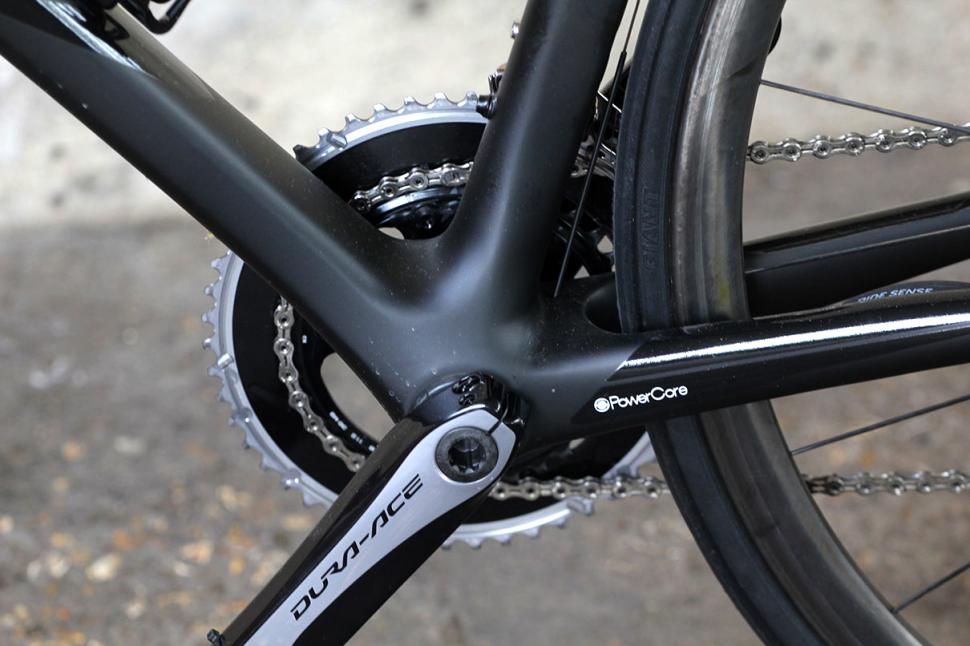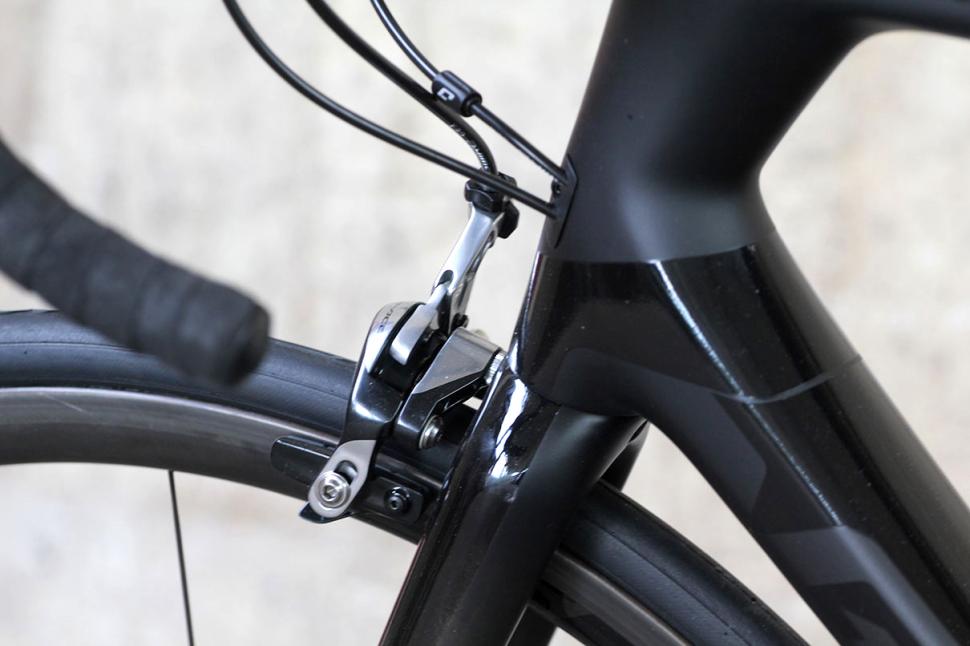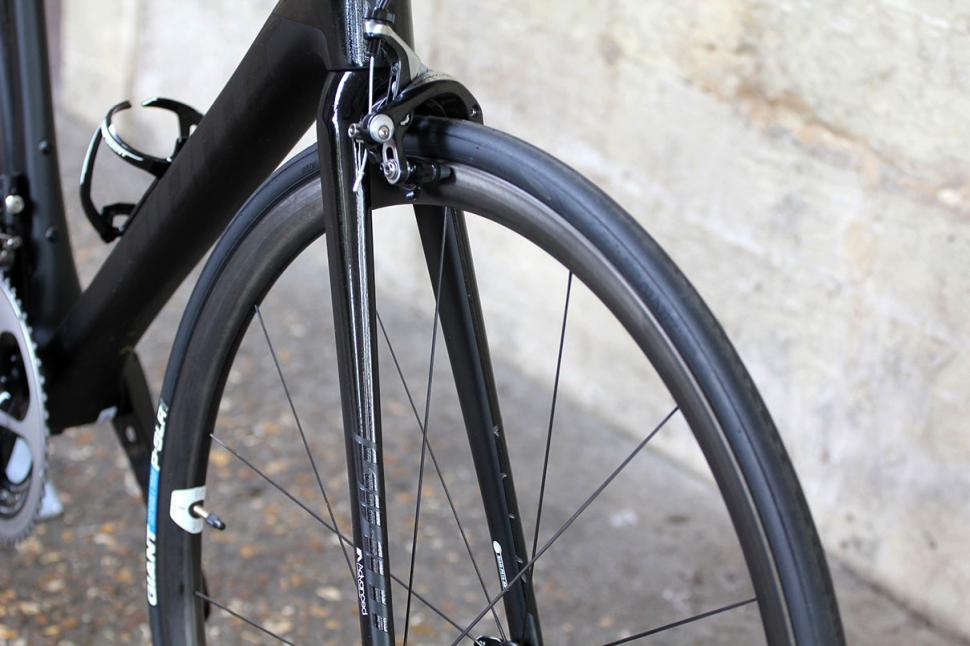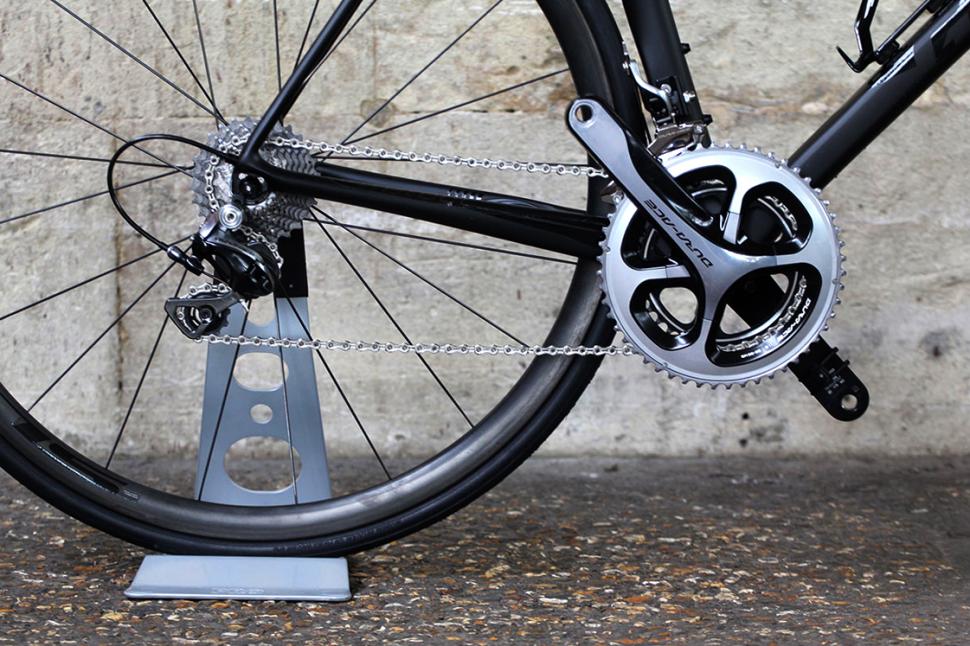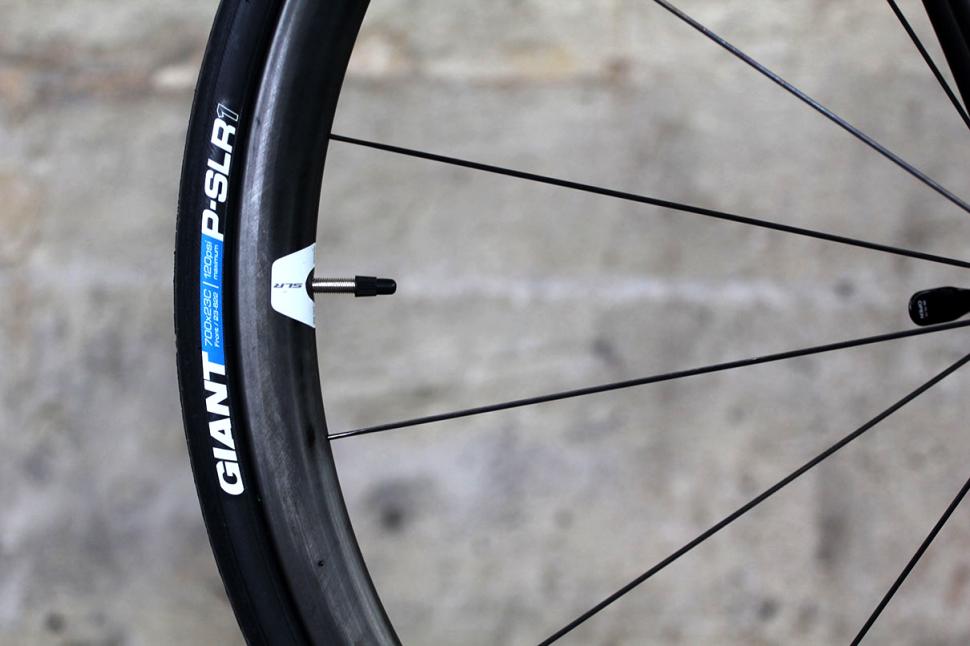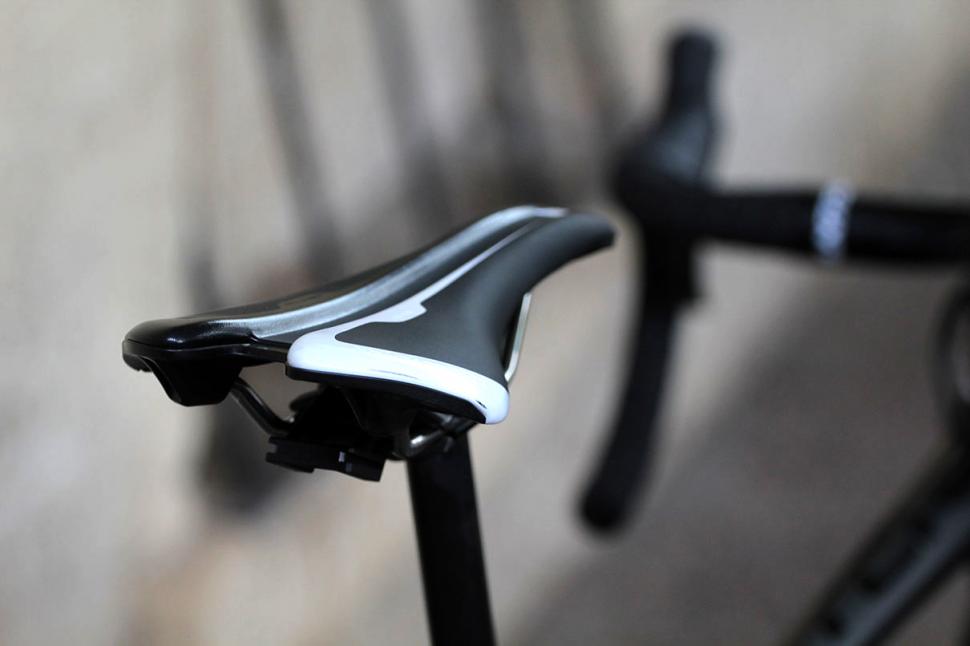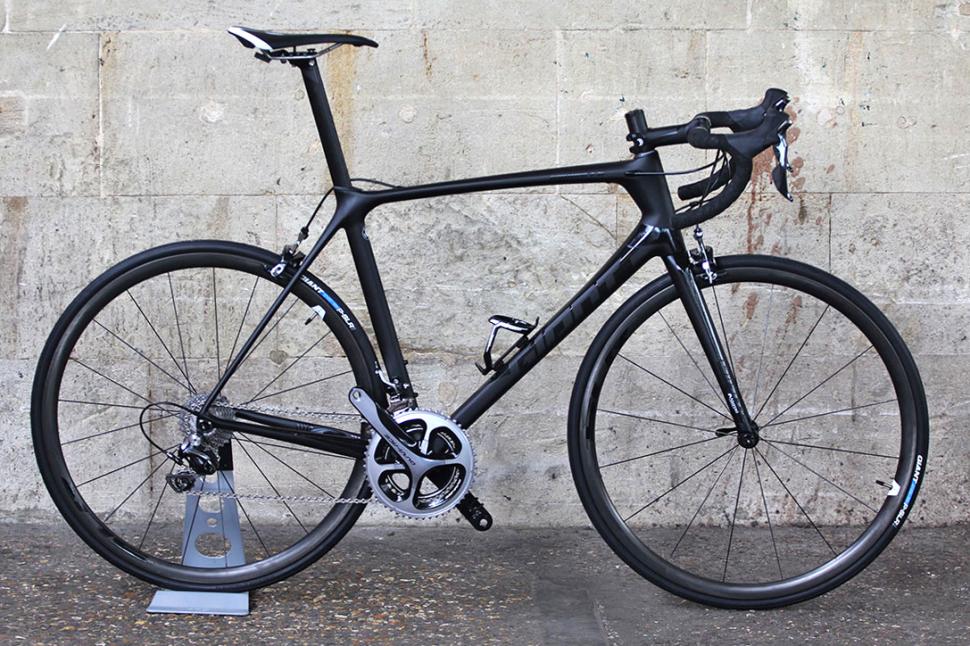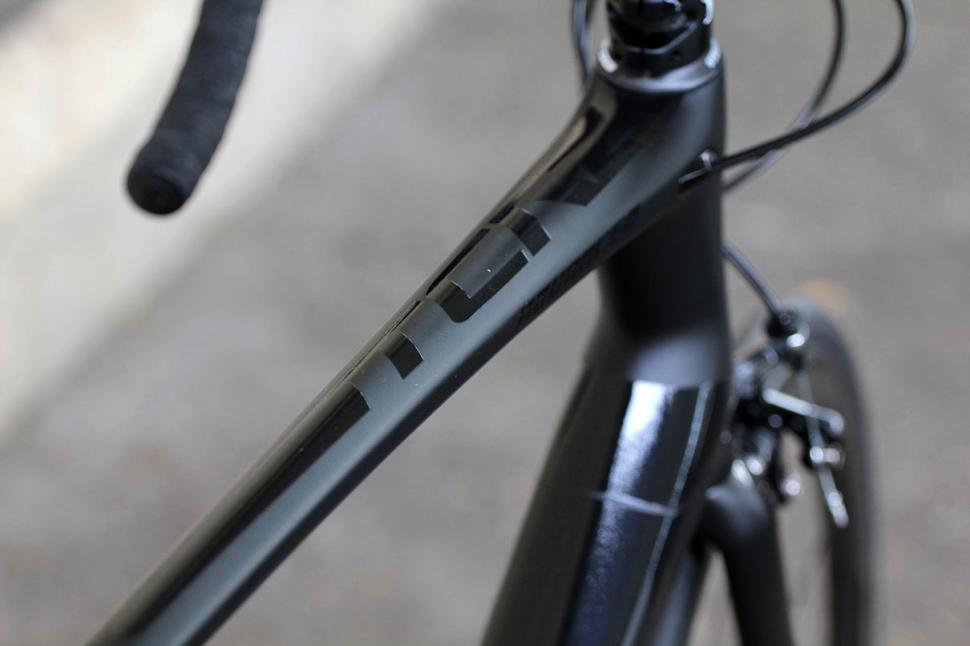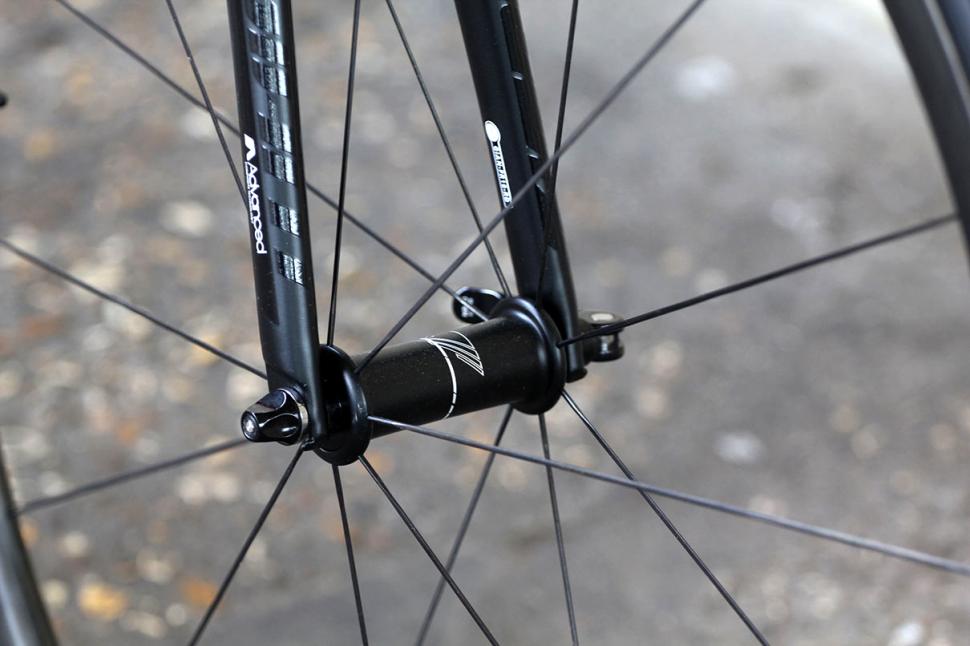The Giant TCR Advanced Pro 0 is a marvellous race bike that's just been redesigned to be a little lighter than before yet just as stiff.
When you jump on the TCR, the first thing you notice is just how solid it feels when you put the watts in, particularly through the centre of the bike. With some bikes, particularly lightweight ones, the bottom bracket will go walkabout when you give it a lot of force to handle, but there's virtually no side-to-side movement here, certainly not when you're seated.
> Find your nearest dealer here
Get out of the saddle to maximise your power or chuck the bike about on a steep climb and the whole thing feels impressively strong and rigid. That's all the more surprising because the TCR doesn't look the most burly frame in the world. Don't get me wrong, it looks sturdy enough, but not massively overbuilt, Giant having slimmed down the tubes noticeably for 2016. It could still handle everything I could summon up and throw at it. The bigger you are and the more watts you put out, the more valuable that will be.
Giant says the rigidity is down to what it calls its Powercore design. This is an oversized bottom bracket/chainstay area with an 86mm-wide BB and asymmetric chainstays. The idea is that this adds stiffness to the driveside, where it's needed most.
Then there's the MegaDrive down tube (everything has to have a technical-sounding name these days). It's rectangular in section and is the part of the frame that most looks like it means business.
The front end is equally robust. Giant uses oversized bearings at both the top (1 1/4in) and the bottom (1 1/2in) of the head tube. This is what it calls its OverDrive 2 system (other brands do something similar). The lower bearing has been moved very slightly higher in the head tube for 2016 so that it's more inline with the down tube, designed to improve the transfer of force to the frame.
The tapered head tube and the fork steerer keep the bike tracking beautifully when you hit the corners hard and fast, and the knowledge that you're going to get the performance you want allows you more options when duking it out close to other riders. The TCR feels like a well-tuned race machine in this respect – which is exactly what it is. The fork is actually a touch lighter than previously although Giant says that it also boasts increased rigidity. That's a clever trick if you can pull it off.
Climbing is another strength. Our complete bike in a large sized test model weighs 6.83kg (15.1lb) and it scales the heights with a real energy. It's well up for climb after climb, feeling like it's working for you on the slopes, egging you on, rather than a dead weight that you're dragging uphill against its will.
I'm a big fan of the 52/36-tooth Shimano Dura-Ace chainset that you get here. If I was forced at gunpoint to choose one chainring combo for all situations (an unlikely scenario, I'll admit), that would probably be it. Granted, persuading the chain to move up from a 36-tooth chainring is occasionally more difficult than from a 39, but it's worth it for the lower gears on offer that allow you to keep spinning quickly on the steep stuff, rather than honking along out of the saddle. The 36x28 gear is pretty small for a race bike (33.8in, to be precise) but, hey, you might find yourself using it from time to time. I did, and it's cool to have as an escape plan if things get really tough.
Giant has given the TCR Advanced Pro a new Variant seatpost for 2016 in a proprietary shape. It's designed to improve the ride quality. The frame is built to Giant's Compact Road Design with a sloping top tube so you're likely to have plenty of that seatpost extending out of the frame – I had masses. The result is that you get quite a bit of movement at the saddle to help deal with second-rate road surfaces. And third-rate ones, come to that. The TCR Advanced Pro doesn't isolate you from road bumps and vibrations to the same extent as some other road bikes out there, but for a race bike it's pretty smooth.
If you want more comfort, you could always switch to wider tyres. The TCR Advanced Pro 0 comes fitted with Giant's own P-SLR1 tyres in a 23mm. They actually measure about 24mm on the Giant SLR 0 wheels (more on those in a mo), according to the road.cc vernier callipers. I'm a little surprised Giant doesn't do these in a 25mm width, that being what all the kool kidz are using these days. The frame could easily take them.
I found the saddle pretty agreeable too. It's Giant's Contact SL Forward design from its new performance range. The key features are the carbon base and the Particle Flow Technology. Two separate pockets of padding contain free-flowing particles – they move around to conform to your shape. According to Giant, this reduces pressure points by more than 20 per cent (that's something else everything has to have these days: a quantified improvement!).
I couldn't give you a percentage – my butt isn't that well calibrated – but I can tell you that I found it to be a very good saddle with a reasonable amount of give and not too much width across the nose (a pet hate of mine). I didn't give it a whole lot of thought when I was out on the road, and that's usually a good thing. Cycling's hard enough (or it can be), without you having to worry about saddle comfort.
In terms of geometry, the 2016 TCR Advanced bikes have changed very little over the previous incarnations, the largest differences to stack (the vertical distance from the centre of the bottom bracket to the top of the head tube) and reach (the horizontal distance between those points) across the five model sizes being 0.7mm, and some of them being completely unchanged.
We have the large sized model in for review, with a 58cm top tube, an 18.8cm head tube, and 73-degree frame angles. It's certainly a race-orientated geometry, although it's not extreme. It depends what you're after, of course, but the TCR Advanced offers a fit that'll appeal to a lot of performance-minded riders.
I won't gibber on too much more about the geometry, you'll be pleased to know, but the sloping top tube does grant you quite a low standover height, if that's something that appeals to you. It's 80.5cm on our large model.
Right, that's enough numbers, let's move on. The TCR Advanced Pro has a frame and fork made from Giant's Advanced-Grade composite which, in turn, is produced from Toray T700 raw carbon fibre in Giant's own composite works. This is Giant's second highest grade of composite, the top-end TCR Advanced SL bikes – there are three complete bikes priced from £2,999 to £5,499 – using Giant's Advanced SL-Grade composite made from T-800 raw carbon fibre.
Check out our First Ride on the Giant TCR Advanced SL from last summer.
The TCR Advanced Pro is available in three different models with the same frame and fork: the Shimano 105-equipped TCR Advanced Pro 2 at £1,799, the Ultegra-equipped TCR Advanced Pro 1 at £2,599, and our TCR Advanced Pro 0 at £3,799.
> Too much? Check out the top 10 road bikes under £3,000 we've reviewed in 2015 here
This bike is fitted with components from Shimano's top-level Dura-Ace groupset, with mechanical rather than electronic shifting. The only exception to the Dura-Ace motif is the KMC X11SL chain. Dura-Ace is excellent across the board, the braking a particular highlight. To save repeating ourselves, you can find our detailed review of the entire groupset here.
Everything else comes from Giant's own range, including the excellent new SLR 0 clincher wheels I mentioned earlier. These are built in-house using full composite, tubeless-compatible rims (30mm high, 23mm wide) and Giant's own alloy hubs, the rear one with a DT Swiss star ratchet freehub.
Giant says, 'The all new SLR 0 climbing wheelsystem features Giant's breakthrough Dynamic Balanced Lacing (DBL) technology which ensures rear wheel spoke tensions are balanced under load – not while static. The result of years of development with Giant engineers, product designers and pro athletes, DBL produces a wheel that offers improved acceleration and climbing response along with durability, while optimised anchor points increase lateral stiffness for exceptional cornering performance.'
The wheels are light (a claimed 1,331g the pair) and very stiff, making for top-notch climbing and even better cornering, and complementing the character of the frameset well. The rim depth makes them a versatile choice, while the SLR pads deliver a firm bite in both dry and wet conditions. They're superb wheels that would cost you £599.99 (front) and £799.99 (rear) if bought separately.
Overall, the Giant TCR Advanced Pro 0 is a really impressive bike: lightweight and stiff with a top-level groupset and wheels that are equally accomplished. This is a very strong proposition.
Verdict
An exceptionally good race bike that combines stiffness and light weight, and a really strong spec
road.cc test report
Make and model: Giant TCR Advanced Pro 0
Size tested: Large
About the bike
State the frame and fork material and method of construction. List the components used to build up the bike.
Frame Advanced-Grade Composite
Fork Advanced-Grade Composite, Full-Composite OverDrive 2 Steerer
Handlebar Giant Contact SL
Stem Giant Contact SL
Seatpost Giant Variant Composite
Saddle Giant Contact SL Forward
Shifters Shimano Dura-Ace 22 speed
Front derailleur Shimano Dura-Ace
Rear derailleur Shimano Dura-Ace
Brakes Shimano Dura-Ace
Cassette Shimano Dura-Ace 11x28
Chain KMC X11SL
Crankset Shimano Dura-Ace 36/52
Bottom Bracket Shimano PressFit
Wheels Giant SLR 0 WheelSystem
Tyres Giant P-SLR1, 700x23mm, Front and Rear Specific, Folding
Tell us what the bike is for, and who it's aimed at. What do the manufacturers say about it? How does that compare to your own feelings about the bike?
Giant says, "From long, hard training rides to critical moments in a race, this is total race performance, made for your podium quest.
"The all-new TCR Advanced Pro gives you every advantage on the road – climbing, descending, cornering and sprinting. Through superior engineering and composite manufacturing, the re-designed Advanced grade composite frame sheds weight without sacrificing its best-in-class stiffness. Legendary Compact Road race geometry delivers precise handling with aggressive riding positioning. The all-new Variant seatpost adds to its smooth, efficient ride quality and performance."
It's a lightweight and stiff race/performance bike, essentially.
Frame and fork
Tell us about the materials used in the frame and fork?
The frame and fork are made in-house from Giant's Advanced-Grade composite, which starts out in life as T700 carbon.
Tell us about the geometry of the frame and fork?
The geometry has been tweaked only very slightly with the redesign. It's a race-focused geometry.
How was the bike in terms of height and reach? How did it compare to other bikes of the same stated size?
It's a race geometry, so fairly long and low.
Riding the bike
Was the bike comfortable to ride? Tell us how you felt about the ride quality.
Yes, it's smooth enough although not as yielding as some more endurance-focused bikes. Swapping the 23mm tyres for 25s would add a bit more forgiveness to the ride.
Did the bike feel stiff in the right places? Did any part of the bike feel too stiff or too flexible?
It feels very stiff, especially through the centre, which is exactly what you want in a bike of this type.
How did the bike transfer power? Did it feel efficient?
Yes, this is the bike's strongest characteristic.
Was there any toe-clip overlap with the front wheel? If so, was it a problem?
None.
How would you describe the steering? Was it lively, neutral or unresponsive? Neutral. About what I'd expect on a bike of this kind.
Tell us some more about the handling. How did the bike feel overall? Did it do particular things well or badly?
Cornering, particularly fast and tight cornering, is a real strength.
Which components had the most effect (good or bad) on the bike's comfort? would you recommend any changes?
The saddle is a winner. It's worth trying out Giant's new saddle fit system to match you to the most suitable saddle from the range. http://www.giant-bicycles.com/en-gb/showcase/saddles/
Which components had the most effect (good or bad) on the bike's stiffness? would you recommend any changes?
The wheels are excellent. Lightweight and stiff, they complement the frame superbly.
The drivetrain
Wheels and tyres
You could easily swap the 23mm tyres for 25s once they wear out. I would.
Controls
Your summary
Did you enjoy riding the bike? Yes
Would you consider buying the bike? Yes
Would you recommend the bike to a friend? Without a doubt.
Use this box to explain your score
This is a great bike with top-end components, including excellent wheels. It's a clear 9.
About the tester
Age: 43
I usually ride: My best bike is:
I've been riding for: Over 20 years I ride: Most days I would class myself as: Expert
I regularly do the following types of riding: commuting, club rides, sportives, general fitness riding
An exceptionally good race bike that combines stiffness and light weight, and a really strong spec

